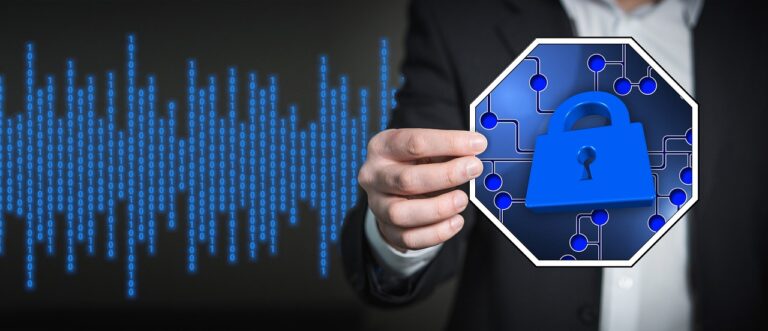What Is A Security Operations Center (SOC)?
Sure! Let me introduce you to the fascinating world of a Security Operations Center (SOC). A SOC is a crucial element in the world of cybersecurity, serving as a central hub where experts vigilantly monitor and respond to security incidents. By analyzing, detecting, and mitigating potential threats, they safeguard organizations from cyber attacks, ensuring their digital infrastructure remains secure. In this article, we will explore the inner workings of a SOC, shedding light on the important role it plays in safeguarding our digital lives. So, let’s dive right in!
What is a security operations center (SOC)?
Definition and overview
A security operations center (SOC) is a centralized unit within an organization that is responsible for monitoring, detecting, and responding to potential cybersecurity incidents. It serves as the nerve center for the organization’s overall security infrastructure, functioning as a 24/7 hub for threat intelligence, incident investigation, and response coordination. The SOC consolidates various security technologies, processes, and personnel to effectively identify and mitigate security threats.
Purpose and objectives
The primary purpose of a SOC is to protect an organization’s digital assets from cyber threats. It achieves this by actively monitoring network activity, identifying potential threats and vulnerabilities, and responding promptly to any detected incidents. The key objectives of a SOC include:
- Threat detection and response: The SOC’s core objective is to proactively identify, analyze, and respond to potential security incidents. By employing advanced threat detection technologies and skilled cybersecurity analysts, the SOC acts as the first line of defense against cyber threats.
- Incident management: SOC teams serve as the incident management hub, coordinating efforts to investigate, contain, and resolve security incidents. They follow predefined incident response processes to minimize the impact of incidents on the organization’s business operations.
- Continuous monitoring: SOC analysts continuously monitor network and system logs, security events, and user activity patterns to ensure early detection of any malicious activity. This proactive approach helps identify and respond to potential threats before they can cause significant damage.
- Threat intelligence analysis: SOC teams actively gather and analyze threat intelligence from various sources to identify emerging threats, conduct risk assessments, and develop proactive countermeasures to safeguard the organization’s infrastructure.
Key functions and responsibilities
A SOC performs various essential functions and responsibilities to ensure the effective security management of an organization. Some of the key functions and responsibilities of a SOC include:
- Monitoring and analysis: SOC analysts continuously monitor security events and alerts generated by various security tools, such as firewalls, intrusion detection systems (IDS), and antivirus software. They analyze the data to identify and investigate potential security incidents.
- Incident response: When a security incident is identified, SOC analysts initiate the incident response process. They assess the severity of the incident, develop a containment strategy, and work with other teams to mitigate the impact and restore normal business operations.
- Vulnerability management: SOC teams conduct regular vulnerability assessments and manage vulnerability remediation processes. They collaborate with system administrators and network engineers to ensure that known vulnerabilities are patched promptly to prevent exploitation.
- Threat hunting: SOC analysts actively search for indications of compromise or advanced persistent threats (APTs) within the organization’s networks and systems. They use various techniques, such as data analysis, log correlation, and threat intelligence analysis, to proactively identify potential threats that may have evaded traditional security controls.
- Forensics and investigation: In the event of a security breach or incident, SOC personnel perform digital forensics analysis to determine the root cause, gather evidence, and support incident response and legal actions if necessary.
Components and infrastructure
A well-equipped SOC requires a carefully designed infrastructure to enable effective monitoring, analysis, and response. The key components and infrastructure of a SOC typically include:
- Security information and event management (SIEM) system: A SIEM system collects, analyzes, and correlates security event data from various sources, providing real-time visibility and alerting capabilities to the SOC analysts.
- Intrusion detection and prevention systems (IDS/IPS): IDS/IPS solutions detect and prevent unauthorized access, malicious activities, and system vulnerabilities by monitoring network traffic and applying predefined rules or anomaly detection algorithms.
- Endpoint detection and response (EDR): EDR solutions provide real-time visibility into endpoints (e.g., servers, workstations) and help detect advanced threats by monitoring system events, processes, and behavioral anomalies.
- Firewalls: Firewalls prevent unauthorized access to the organization’s network infrastructure by examining and controlling incoming and outgoing network traffic based on predefined security rules.
- Threat intelligence platforms: These platforms gather, analyze, and share threat intelligence to help SOC analysts understand emerging threats, anticipate attackers’ tactics, and enhance overall security posture.
- Incident management platform: An incident management platform enables efficient incident tracking, communication, and collaboration among the members of the SOC team during incident response activities.
Operational models
SOCs can be structured and operated in different ways, depending on the organization’s size, industry, and risk appetite. The three common operational models are:
- In-house SOC: This model involves establishing and maintaining an internal SOC staffed by the organization’s employees. It provides full control and customization over security operations but requires significant investments in infrastructure, personnel, and ongoing training.
- Co-managed SOC: In this model, an organization partners with a managed security service provider (MSSP) to jointly operate the SOC. The organization retains some level of control and oversight while leveraging the expertise and resources of the MSSP.
- Outsourced SOC: With this model, an organization outsources its SOC functions entirely to a third-party provider. This approach offers cost savings, as the organization can utilize the provider’s infrastructure and security expertise without the need for significant investments in-house.
Each operational model has its own advantages and considerations, and organizations should carefully assess their specific requirements and capabilities before choosing the most suitable model for their SOC.
SOC team roles and responsibilities
A SOC team consists of professionals with diverse skill sets and responsibilities. Some common roles and responsibilities within a SOC include:
- SOC manager: The SOC manager oversees the entire SOC operation, manages resources, defines processes, establishes key metrics, and ensures alignment with organizational goals.
- Security analysts: These professionals analyze security event data, investigate potential incidents, and respond accordingly. They are responsible for monitoring security systems, triaging alerts, conducting initial investigations, and escalating issues to higher-level analysts or management.
- Incident responders: Incident responders focus on the timely detection, containment, and eradication of security incidents. They work closely with other teams, such as network administrators and system engineers, to restore affected services and systems.
- Threat intelligence analysts: These analysts gather, analyze, and monitor threat intelligence to identify emerging threats, tactics, and vulnerabilities that may pose a risk to the organization. They proactively develop countermeasures and recommend security enhancements based on their analysis.
- Forensic analysts: Forensic analysts specialize in digital forensics and are responsible for investigating and collecting evidence in the event of a security breach or incident. They meticulously analyze artifacts to determine the scope, impact, and root cause of the incident.
It is crucial for SOC teams to collaborate effectively to ensure smooth operations and successful incident response.
Technology and tools used in a SOC
A SOC employs a wide range of technology and tools to enable efficient security operations. Some common technologies and tools used in a SOC include:
- SIEM platforms: SIEM platforms collect, analyze, and correlate security event data from various sources, providing comprehensive visibility and alerting capabilities for SOC analysts.
- Threat intelligence platforms: These platforms aggregate and analyze threat intelligence feeds from multiple sources to help SOC analysts stay updated on emerging threats and make informed security decisions.
- Intrusion detection and prevention systems: IDS/IPS solutions monitor network traffic and detect potential security breaches or policy violations, providing alerts to SOC analysts for further investigation.
- Endpoint detection and response solutions: EDR solutions monitor endpoints for suspicious activity, providing detailed visibility into system events, file activity, and network connections to aid in threat detection and response.
- Security orchestration, automation, and response (SOAR) platforms: SOAR platforms automate incident response processes, enabling SOC teams to efficiently manage and coordinate response activities across various security tools and systems.
- Vulnerability scanners: These tools conduct regular vulnerability scans on networks, systems, and applications to identify known weaknesses that can be exploited by attackers.
- Forensic analysis tools: Forensic tools help SOC analysts collect and analyze digital evidence during incident investigations, enabling them to reconstruct events and determine the root cause of security incidents.
It is crucial for a SOC to regularly update its technology stack to adapt to emerging threats, improve detection capabilities, and enhance overall security effectiveness.
Challenges faced by a SOC
While fulfilling its critical role, a SOC often encounters several challenges. Some common challenges faced by a SOC include:
- Talent shortage: The demand for skilled cybersecurity professionals exceeds the available talent pool, making it difficult for organizations to attract and retain qualified SOC staff.
- Alert fatigue: SOC analysts are exposed to a high volume of alerts, which can lead to alert fatigue and decreased effectiveness in identifying true security incidents among the noise.
- Complexity and integration issues: Managing a diverse range of security tools and technologies can be challenging, especially when integrating data from multiple sources to gain holistic visibility and accurate incident correlation.
- Evolving threat landscape: Cyber threats are constantly evolving, with attackers employing sophisticated techniques and tactics to bypass traditional security controls. Staying ahead of these threats requires continuous skill development and technological advancements.
- Legal and compliance considerations: SOC activities must align with legal and regulatory requirements, such as data privacy laws and incident reporting obligations. Ensuring compliance while responding to security incidents can be complex and time-consuming.
To overcome these challenges, organizations should invest in effective training and development programs, leverage automation and orchestration technologies, regularly review and update processes, and foster collaboration with external parties such as threat intelligence sharing communities.
Best practices for establishing and operating a SOC
Establishing and operating a SOC requires careful planning and adherence to best practices. Some key best practices for a successful SOC implementation include:
- Clearly define goals and objectives: Start by defining the specific goals and objectives of the SOC based on the organization’s risk profile and business requirements. These goals will guide the development of strategies, processes, and technology infrastructure.
- Establish comprehensive incident response processes: Develop well-defined incident response processes that cover the entire incident lifecycle, from detection and containment to eradication and recovery. Regularly test and update these processes to ensure effectiveness and alignment with evolving threats.
- Invest in continuous skills development: Provide ongoing training and development opportunities for SOC staff to keep up with the latest threats, technologies, and best practices. This includes technical training, certifications, and participation in cybersecurity communities and conferences.
- Implement threat intelligence sharing: Engage with external threat intelligence providers and participate in threat intelligence sharing communities to gain insights into emerging threats and potential indicators of compromise. Cooperation with other organizations enhances threat detection and response capabilities.
- Leverage automation and orchestration: Adopt automation and orchestration technologies to streamline SOC processes, reduce manual effort, and enable timely response to security incidents. Automated workflows and playbooks can significantly enhance efficiency and effectiveness.
- Conduct regular security assessments: Perform comprehensive security assessments, penetration tests, and vulnerability scans to identify weaknesses and gaps in the organization’s security posture. Address identified vulnerabilities promptly to prevent exploitation.
- Collaborate with external partners: Establish relationships with external partners, such as incident response service providers, managed security service providers, and law enforcement agencies. These partnerships can provide access to additional expertise and resources during complex incidents.
By following these best practices, organizations can establish a robust and efficient SOC that effectively mitigates cyber threats and safeguards critical assets.
Emerging trends in SOC
The field of security operations is continuously evolving to address emerging threats and technological advancements. Some notable trends in the SOC landscape include:
- Artificial Intelligence (AI) in SOC: AI and machine learning algorithms are increasingly being used to augment SOC capabilities, automating threat detection, incident response, and decision-making processes.
- Extended detection & response (XDR): XDR platforms integrate multiple security tools, such as EDR, network detection and response (NDR), and cloud security analytics, providing a comprehensive and unified view of security incidents across different environments.
- Cloud-native security monitoring: As organizations increasingly adopt cloud services, SOC teams are adapting their monitoring capabilities to include cloud-native security controls and technologies, ensuring visibility and protection across on-premises and cloud environments.
- Zero Trust security model: The adoption of Zero Trust security principles, which assumes no trust by default, requires SOC teams to continuously authenticate and authorize all users, devices, and applications, enhancing overall security posture.
- Threat hunting as a proactive approach: SOC teams are embracing proactive threat hunting techniques to actively search for advanced threats and hidden indicators of compromise within their networks, ensuring early detection and prevention.
- Security automation and orchestration: SOC automation is becoming more prevalent, enabling organizations to respond to security incidents faster, reduce response times, and alleviate the burden on SOC analysts.
By staying updated with these emerging trends and technologies, organizations can enhance their SOC capabilities and stay ahead of increasingly sophisticated cyber threats.
In conclusion, a security operations center (SOC) is a vital component of an organization’s cybersecurity defense strategy. It serves as the central hub for monitoring, detecting, and responding to potential security incidents. With its defined objectives, skilled personnel, and advanced technology infrastructure, a SOC plays a crucial role in safeguarding an organization’s digital assets and ensuring continuous business operations in the face of cyber threats. By following best practices and embracing emerging trends, organizations can establish and operate an effective SOC capable of addressing the ever-evolving cybersecurity challenges of the digital age.








